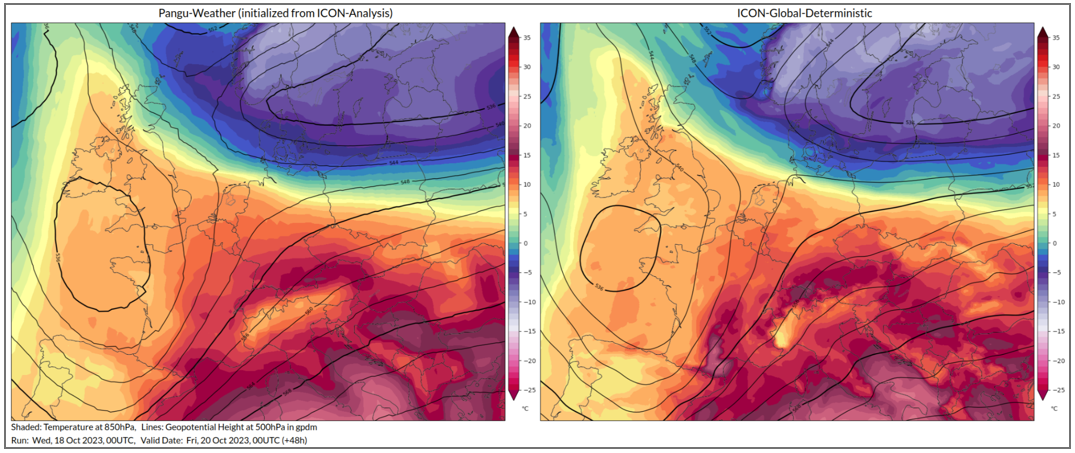Data-driven weather models: Towards improved uncertainty quantification, interpretability and efficiency
Modern weather forecasts are based on physical models, which describe atmospheric processes via systems of partial differential equations – a process referred to as numerical weather prediction (NWP). Numerically solving the differential equations requires tremendous computational resources, limiting the spatial and temporal resolution, as well as the number of ensemble runs.
Over the past years, purely data-driven AI models have emerged as a new paradigm for weather prediction, and have recently seen surprising success and rapid advancement. Contrary to NWP, data-driven weather models aim to predict the future weather (typically iteratively in steps of 6 hours or less) from the initial weather conditions at the starting time based on statistical relations learned from past data. Beyond improved forecasts, the major advantages of data-driven models are their substantially lower computational costs (and accompanied energy consumption) and faster generation of forecasts, once a model has been trained. Since 2022, fundamental advances have been achieved, with data-driven weather models now convincingly outperforming state-of-the-art NWP models. Perhaps not surprisingly, the most notable contributions have been from research teams at large tech companies, including Nvidia, Huawei, and Google/Deepmind.
While the progress in data-driven weather forecasting has been astonishing and the achieved results are remarkable, several limitations and key questions remain open. In particular, with much of the recent developments driven by private industry, there is ample need to develop targeted methodology and tools for improving our understanding of the potential and limitations of data-driven weather models from a research perspective.
To that end, combining our expertise from statistics, computer science and meteorology not only fosters interdisciplinary collaboration within YIN and brings together YIGs from CN and CS, but also enables us to develop a synergistic perspective for tackling important research questions. Our YIN Grant project specifically focused on the question of how forecast uncertainties can be quantified for deterministic data-driven weather models, and how different choices of model architectures and training methodology affect the forecast performance. Two publications on the results are currently under review, and the YIN Grant project has served as a cornerstone for several student theses and a follow-up projects. One example is the BMBF-funded project “SmartWeather21”, where we aim to utilize data-driven weather models to explore the future weather in a changing climate.
Publications:
Bülte, C., Horat, N., Quinting, J., and Lerch, S. (2024) Uncertainty quantification for data-driven weather models. https://arxiv.org/abs/2403.13458
To, D.A., Quinting, J., Hoshyaripour, G.A., Götz, M., Streit, A., and Debus, C. (2024) Architectural Insights and Training Methodology Optimization of Pangu-Weather. https://doi.org/10.5194/egusphere-2024-1714.

